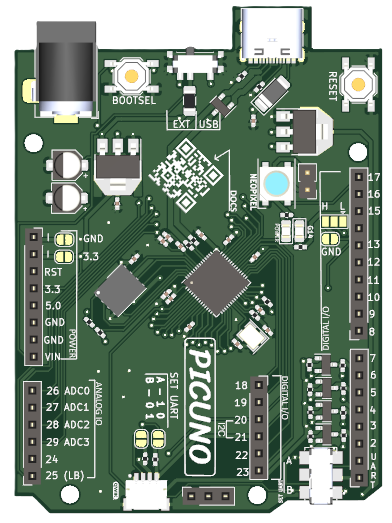We offer the innovative PICUNO development board family that combines different powerful processors with UNO form factor compatibility. Our flagship RP2040 variant features ultra-high performance 5V logic capabilities, 8MB storage, USB-C connectivity, and extensive GPIO access. With built-in QWIIC/Stemma QT support, Neo-Pixel capabilities, and compatibility with MicroPython, CircuitPython, and Arduino IDE across the entire PICUNO range, our fully open-source designs help you increase system integration, functionality and performance while maintaining consistency across different processor architectures.













